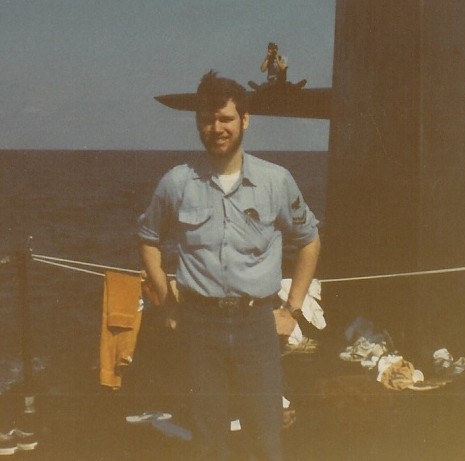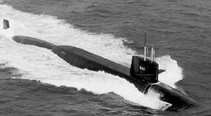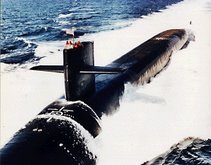Depending on the concentration of these glowing organisms, a ship's wake may be visible for up to 6 nautical miles. In 1918, it was bioluminescence that gave away the position of the last German U-boat sunk during World War I.
The Navy is therefore interested in studying bioluminescence and it's Naval Research Laboratory scientists recently confirmed the existence of a phenomenon known as a "Milk Sea".
There have been 235 documented sightings of milky seas since 1915 but up until now there has been no real photograpic evidence of bioluminescence on such a large scale. However, The Defense Meteorological Satellite Program has captured an image of a "milk sea" the size of Connecticut in the Indian Ocean off the coast of Somalia.

Milky Sea (Source: Naval Research Laboratory - Dr. Steven Miller)
A report in Live Science "Mystery Ocean Glow Confirmed in Satellite Photos" states the following:
Scientists suspect bioluminescent bacteria are behind the phenomenon. Such creatures produce a continuous glow, in contrast to the brief, bright flashes of light produced by "dinoflagellate" bioluminescent organims that are seen more commonly lighting up ship wakes and breaking waves.
"The problem with the bacteria hypothesis is that an extremely high concentration of bacteria must exist before they begin to produce light," Miller told LiveScience. "But what could possibly support the occurrence of such a large population?"
One idea, put forward by the lone research vessel to ever encounter a milky sea, is that the bacteria are not free-living, but instead are living off some local supporting "substrate."
"This previous excursion reported the presence of bioluminescent bacteria, which were found to be living in association with an algal bloom," Miller explained.
So it appears that a "Milk Sea" could be caused by high concentrations of bioluminescent bacteria independent of a disturbance, but what can be witnessed in a ship's wake are tiny bioluminescent organisms like jellyfish.

Bioluminescent Jellyfish (Source: NOAA)
The "Milk Sea" phenomenon is found primarily in the Indian Ocean, where as, bioluminescence can be found in all oceans throughout the world. Research into understanding bioluminescence and possibly forecasting it's occurrence could help US Submarines operating in littoral waters avoid detection as well as improve anti-submarine warfare against our adversaries.









2 comments:
Very interesting topic, Lubber.
While aboard the USS WIlliam V Pratt near Masirah Island in the summer of 1984 I witnessed the "Milky Sea". Unlike the phosphoresence kicked up by a wake or the pulse of an active sonar, the entire surface of the sea was glowing from horizon to horizon. Since this was during the height of the monsoon there was a fair amount of wind drivien chop and the spray being whipped up was phosphorescing as well. This gave the surface of the sea a "fuzzy" diffuse look.
A P-3 from VP-9 was on station out of Diego Garcia and we asked him how far he was seeing the glow, and he also said from horizon to horizon from angels 1.
Bizarre
Post a Comment